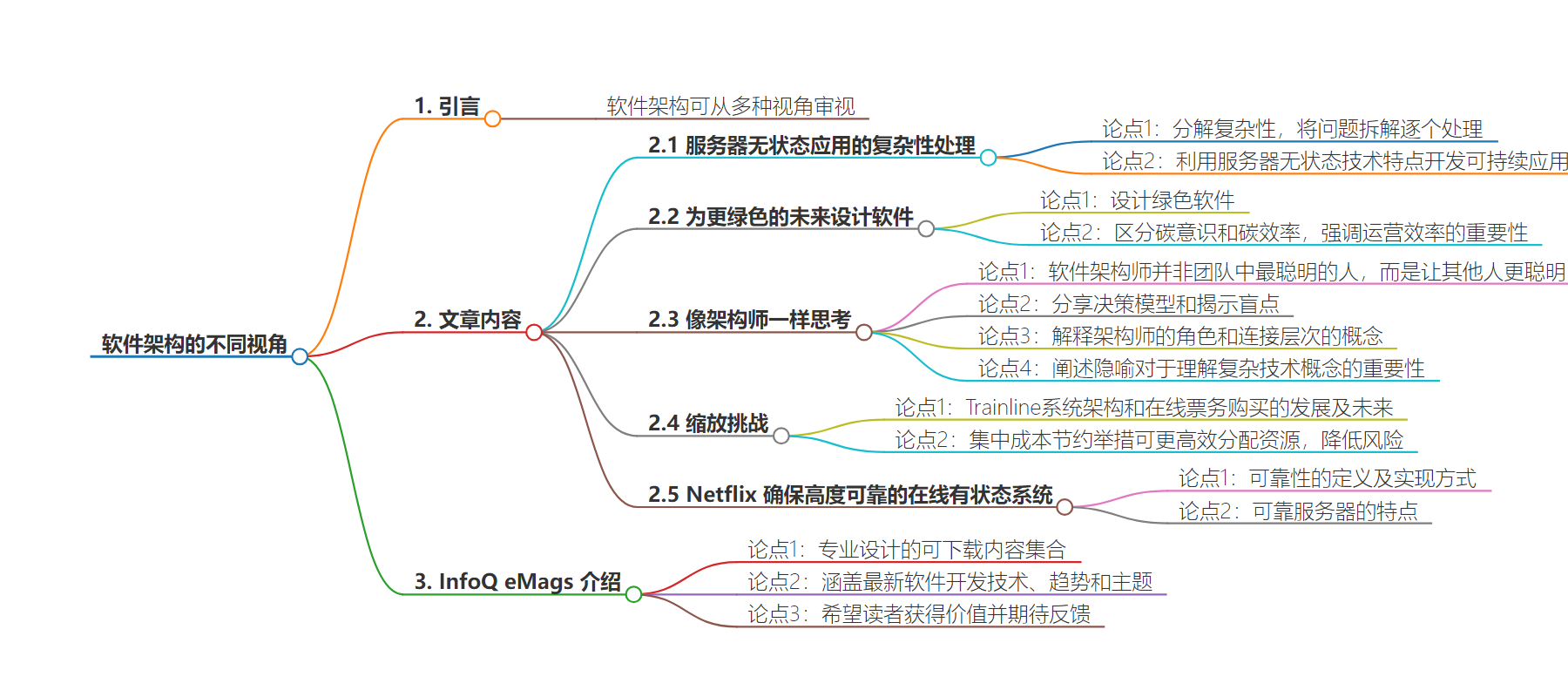包阅导读总结
1. 关键词:Software Architecture、Perspectives、Complexity、Reliability、Green Future
2. 总结:
此文本围绕软件架构展开,探讨了从不同视角设计软件,包括为更绿色的未来设计、确保可靠的在线有状态系统、应对服务器应用的复杂性等,并介绍了相关文章,强调了 InfoQ eMags 的价值和期待反馈。
3. 主要内容:
– 软件架构可从技术、业务和组织等多视角看待,此 eMag 进行探索并讨论各视角对软件设计和开发的影响。
– 包含的文章有:
– 《The Set Piece Strategy: Tackling Complexity in Serverless Applications》探讨分解服务器应用复杂性,利用其特性开发可持续应用。
– 《How to Architect Software for a Greener Future》讲述设计绿色软件,区分碳意识和碳效率。
– 《Thinking Like an Architect》反驳软件架构师是团队最聪明的人的观点,强调其让他人更聪明。
– 《Scaling Challenges: Productivity, Cost Efficiency, and Microservice Management》讨论系统架构演变和未来,主张集中成本节约举措。
– 《How Netflix Ensures Highly-Reliable Online Stateful Systems》解释可靠性的含义及可靠服务器的特点。
– InfoQ eMags 是专业设计的内容集合,希望读者从中获取价值,期待读者反馈。
思维导图:
文章来源:infoq.com
作者:InfoQ
发布时间:2024/8/7 0:00
语言:英文
总字数:480字
预计阅读时间:2分钟
评分:73分
标签:软件架构,可持续性,可靠性,无服务器应用程序,微服务
以下为原文内容
本内容来源于用户推荐转载,旨在分享知识与观点,如有侵权请联系删除 联系邮箱 media@ilingban.com
How can we architect software for a greener future? How can a company ensure highly reliable online stateful systems? What are the major scaling challenges? How can we tackle complexity in a serverless application? And, by the way, how can we identify good and poor architects?
Software architecture can be viewed from many perspectives, such as technical, business, and organizational. This eMag will explore the different lenses and discuss the implications of each perspective for software design and development.
Free download
This eMag includes:
-
“The Set Piece Strategy: Tackling Complexity in Serverless Applications” by Sheen Brisals discusses how to decompose complexity, breaking down issues into parts to effectively address each one. Furthermore, we should develop sustainable applications by leveraging the features offered by serverless technology, such as optimization, robust availability, and scalability.
-
“How to Architect Software for a Greener Future” by Sara Bergman discusses how to design green software, highlighting the difference between carbon awareness and carbon efficiency. While operational efficiency may not be the most glamorous option, it is a practical and achievable step almost everyone can take to build greener software.
-
“Thinking Like an Architect” by Gregor Hohpe debunks the myth of software architects as the smartest people on the team. Hohpe argues that architects make everyone else smarter by sharing decision models and revealing blind spots. By explaining the roles of an architect and the concept of connecting levels, he delves into the importance of metaphors for making complex technical concepts more relatable.
-
“Scaling Challenges: Productivity, Cost Efficiency, and Microservice Management” by Milena Nikolic discusses how Trainline’s systems architecture and online ticket purchasing have evolved and what the future holds. Nikolic argues that centralizing cost-saving initiatives leads to more efficient resource allocation and reduces the risks associated with decentralized efforts.
-
“How Netflix Ensures Highly-Reliable Online Stateful Systems” by Joseph Lynch explains what reliability means: investing to reduce the probability of failure, the blast radius, and recovery time to zero, across all deployment components: clients, servers, and APIs. Reliable servers must be redundant, workload-optimized, and heavily cached, with quick data recovery and the ability to leverage multiple replicated copies.
InfoQ eMags are professionally designed, downloadable collections of popular InfoQ content – articles, interviews, presentations, and research – covering the latest software development technologies, trends, and topics.
We hope you find value in the articles and resources in this eMag and are inspired by the practical solutions provided by the authors. We would love to receive your feedback via editors@infoq.com about this eMag.
